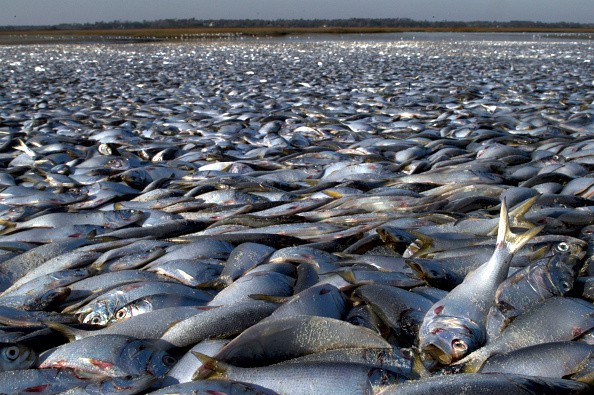Last Thursday, Feb. 3, hundreds of thousands of fish and prawns were discovered floating in Haslams Creek.
More dead fishes were found at Rydalmere, Sydney, on Sunday, Feb. 6.
NSW Environment Protection Authority (EPA) said the death of the fishes may be due to natural causes.

Investigation into the Death of the Fishes
The EPA found low amounts of dissolved oxygen in the water in both cases.
According to preliminary findings, the low oxygen levels in Haslams Creek were due to natural causes and not chemical pollution, the EPA said in a statement following the event.
EPA officers' observations showed that low oxygen caused the fish to perish.
The Sydney Olympic Park Authority cleaned up after a fish kill in Haslams Creek, according to 9News.
Natural factors are suspected in the low oxygen levels in Rydalmere, according to preliminary investigations.
The fish deaths were caused by high-intensity storms, which carried organic waste into the river, and high water temperatures, as per a statement from the Environmental Protection Agency.
Estimates range from a few hundreds to as many as 4,000 fishes have died in the Parramatta River at Rydalmere, as noted by the EPA officers.
Species of Fish Affected
Mr Bahjat, who fishes regularly along the Parramatta River reported via news.com.au that he saw fishes of all sizes, including bream, flathead, whiting, luderick, herring, puffer fish, and prawns, lying on their sides.
"It's a shocking sight, with all sorts of dead fish ... along the whole Rydalmere foreshore," Parramatta councillor Kellie Darley said in a Facebook post made on Feb. 6.
Fish carcasses and fish parts that had not been removed by the NSW Environmental Protection Authority (EPA) were emitting strong scents as they decayed.
As many as 4,000 fish had been killed in just one location, according to EPA's head of regulatory operations, James Goodwin.
The first occurrence at Haslams Creek in Sydney Olympic Park, a body of water that is connected to the Parramatta River via Homebush Bay, was reported on Feb. 3.

How Similar Event can be Prevented
The EPA's primary goal, according to Goodin, was to develop a picture of the oxygen levels along the river in order to prevent a similar incident.
According to the Department of Primary Industries, fish kills are more common in the summer and occur as a result of rapid temperature fluctuations.
Professor Joy Becker, an expert in Aquatic Animal Health and Production at the University of Sydney, said that lack of water quality led to fish deaths.
Becker further said that declining water quality threatens the life of sea animals and if it continues for an extended period of time, it can result in death.
As per ABC News, chemical contamination can be common in waters, as well as lack of oxygen and changing water temperatures.
However, all of these factors may be present at the same time.
For more news, updates about fishes and similar topics don't forget to follow Nature World News!
© 2025 NatureWorldNews.com All rights reserved. Do not reproduce without permission.





